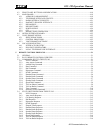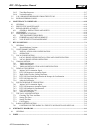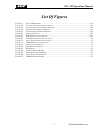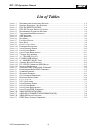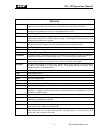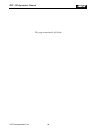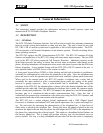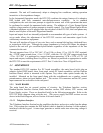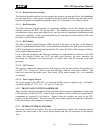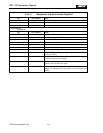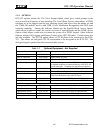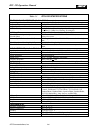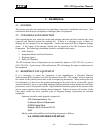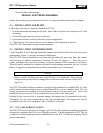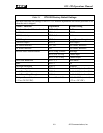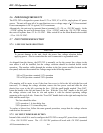
RTU-292 Operations Manual
1.3.1.2 Handset/Speaker Interface
The Handset/Speaker Interface Section contains the speaker pre-amp and driver, the headphone
pre-amp and driver. Audio gates controlled by the front panel switches route the audio to the
speaker and handset microphone preamplifier and ALC (Automatic Level Control) circuit.
1.3.1.3 Radio Interface
The Radio Interface Section consists of operational amplifier circuits that handle the audio
interfaces between the RTU-292 and the radio. The amplifiers provide gain adjustability to
accommodate various input and output levels, and also provide impedance transformation and
output drive capability. Audio gates controlled by the front panel switches and the CPU route
the audio as desired by the operator.
1.3.1.4 DSP Module
The plug-in Digital Signal Processor (DSP) module is the heart of the unit, as the adaptive
hybrid is implemented with the DSP. From a hardware standpoint, the DSP section consists of
a DSP chip interfaced with dual analog interface ICs, static RAM for audio storage and delay,
and a program flash memory IC.
From a software standpoint, the following functions are implemented in software in the DSP
section: the adaptive hybrid, the VOX, an audio peak detector, the noise generator for
measuring the telephone line characteristics, an audio delay and the transmit setup tone
generator.
1.3.1.5 CPU Section
This section contains the microprocessor and program software that controls all operations of
the RTU-292. Various I/O devices read external inputs and the front panel controls. The
inputs are processed and audio gates, front panel LEDs, audio prompts, etc., are controlled
accordingly.
1.3.1.6 Power Supply Section
The power supply in the RTU-292 is a quiet and reliable passive regulator type. It furnishes
regulated voltages of +12V, -12V, +5V and -5V to the unit.
1.3.2 FRONT PANEL SWITCH ASSEMBLIES
There are three separate front panel switch assemblies that contain the pushbutton switches and
LED indicators for the RTU-292. Each of these assemblies contains a different complement of
components as required by its function. Signals from the switches are read by the CPU
circuitry on the main board. The processor then routes audio signals and lights the front panel
LEDs according to the pushbutton commands.
1.3.3 OPTIONS INTERFACE BOARD
This board, located on the Options Tray above the main board, contains the connectors used to
interface the main board to the various option boards that may be assembled to the Options
Tray.
JPS Communications, Inc.
1-3



